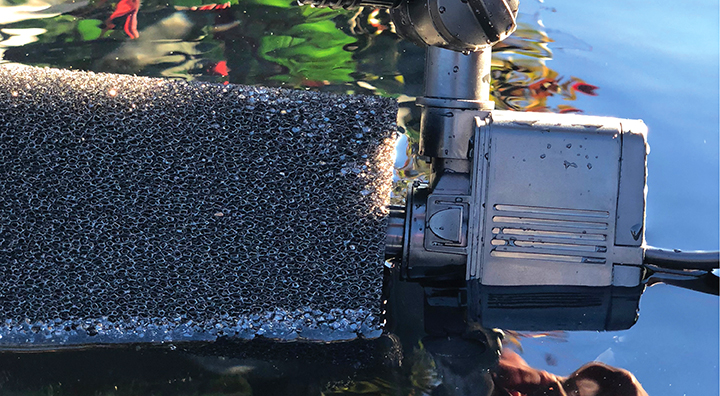
Virtually all small to medium pond and water feature pumps you come across will have one feature in common - a sponge filter.
The size, shape and position may vary but they all serve the same main purpose – to help keep your water clean.
There are two ways these humble little filters work, the first is the most obvious, the second may be a wee bit of a surprise.
The physical filter – The sponge filter forms a barrier that prevents material above a certain size entering your water feature pump and recirculating through your pond. This also prevents larger material from entering your pump where it has the potential to damage or jam your pump impeller or block your pipes, reducing water flow. Naturally this means that you sponge filter will become clogged over time and cleaning it is a simple part of regular pond maintenance.
The living filter – When you look at your sponge you tend to just see the outside surface but the fact is these sponges have been very cleverly engineered to have an extremely large internal surface area. Think of it like that famous line in Dr Who about the TARDIS – it’s much bigger on the inside. This large internal surface area serves a fascinating purpose. It creates the perfect home for beneficial microorganisms to build their homes. Once established, which they’ll do naturally, they feed on super-fine nutrient-rich material in your pond water as it passes through helping to keep water clear and clean.
Cleaning your sponge filter
Knowing that your filter becomes home to tens of millions of useful little workers helps you to understand why you need to take a little care cleaning your sponge filter. The only tools you’ll need are a bucket.
- Turn pump off and carefully remove sponge block.
- 3/4s fill bucket with some pond water. Don’t use tap water as the chlorine and other products may kill your microorganisms.
- Place sponge filter into bucket of water and gently massage to remove the silty material. Drain sponge a little and remove. The trick is to not aggressively squeeze the sponge. And don’t rinse it through as this will flush your microorganisms out.
- Replace sponge filter on pump and switch back on. The water from the bucket can be poured out into garden areas. Your plants and soil will love it as it’s quite nutrient rich.
Upgrading your sponge filter
You may find that the on-board sponge filter in your pump is becoming too quickly clogged with material or you may just want to improve the biological efficiency of your filter. There’s a super-simple way to do this – add an external filter block. Many pond pumps can easily have a large, external filter block retrofitted to them. This can either be screwed straight into the intake of your pump, after removing the filter cage, or can be put on the end of a piece of flexible hose connected to the inlet.
